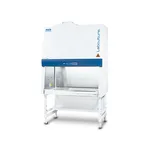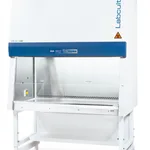
VacciXcell™ Hybrid Bioreactor
✨AI 추천 연관 상품
AI가 분석한 이 상품과 연관된 추천 상품들을 확인해보세요
연관 상품을 찾고 있습니다...

Over the years, there has been an emerging trend in the demand for biopharmaceuticals in the treatment of diseases. Biopharmaceuticals can be produced with microorganisms, adherent cells or suspended cells. While the recent advances in the technology have paved the way for a more efficient and effective culture of adherent and suspended cells, most bioreactors are only capable of supporting the growth of either adherent cells or suspension cells.
The VacciXcell™ Hybrid Reactor is a laboratory scale bioreactor system that supports both the growth of suspension and adherent cells. It is capable of processing adherent cell culture using macrocarriers or microcarriers, suspension culture and fermentation. It applies the tide motion principle for adherent culture and stir principle for suspension culture.
The VacciXcell™ Hybrid Reactor is ideal for biopharmaceutical companies who are in the initial stages of research and development and are looking to determine the effectiveness, productivity and feasibility of the mammalian cells, whether as suspended or adherent cells.
Adherent Vs. Suspension
The interchangeability feature of the matrix vessel and impeller within the reactor vessel allows the reactor to switch its mode from adherent culture to suspension culture.
For suspension culture, the suspended cells in the culture medium are stirred using an impeller. On the other hand, adherent cells are cultured by attaching to carriers, BIO Noc™II, which are contained in the matrix vessel. The adherent cells are then alternately exposed to aeration and nutrition as the culture medium moves in and out of the matrix vessel via air pressure. The matrix vessel is cylindrical in shape and perforated halfway. The perforated half is used for medium submersion, while the non-perforated half is used during seeding. The nutrient medium remains at the bottom of the reactor vessel and is kept homogeneous by a built-in magnetic stirrer. Aeration occurs through headspace overlay and through the dissolved oxygen in the nutrient medium.
Working volume up to 5L for adherent cells and 6.5L for suspension cells
Can run in three modes of operation – batch, fed-batch, and perfusion
Automated monitoring system and various paramaters such as pH, dissolved oxygen, agitation, foaming, temperature, turbidity, biomass, and redox
Four configurable peristaltic pumps for fluid addition
Various impeller designs suited for different microorganisms and suspension cells
Multiple-Use System available at various capacities
No Oxygen limitation during adherent cell culture
Large surface area for adherent cell culture
Tide motion controlled by air pressure
Optional Cleaning-In-Place (CIP) System
Protein Production
Vaccine Production
Cell Therapy
Gene Therapy
Antibody production
Research and Development
Principle
Adherent Vs. Suspension
The interchangeability feature of the matrix vessel and impeller within the reactor vessel allows the reactor to switch its mode from adherent culture to suspension culture.
For suspension culture, the suspended cells in the culture medium are stirred using an impeller. On the other hand, adherent cells are cultured by attaching to carriers, BIO Noc™II, which are contained in the matrix vessel. The adherent cells are then alternately exposed to aeration and nutrition as the culture medium moves in and out of the matrix vessel via air pressure. The matrix vessel is cylindrical in shape and perforated halfway. The perforated half is used for medium submersion, while the non-perforated half is used during seeding. The nutrient medium remains at the bottom of the reactor vessel and is kept homogeneous by a built-in magnetic stirrer. Aeration occurs through headspace overlay and through the dissolved oxygen in the nutrient medium.
Features
- Working volume up to 5L for adherent cells and 6.5L for suspension cells
- Can run in three modes of operation – batch, fed-batch, and perfusion
- Automated monitoring system and various paramaters such as pH, dissolved oxygen, agitation, foaming, temperature, turbidity, biomass, and redox
- Four configurable peristaltic pumps for fluid addition
- Various impeller designs suited for different microorganisms and suspension cells
- Multiple-Use System available at various capacities
- No Oxygen limitation during adherent cell culture
- Large surface area for adherent cell culture
- Tide motion controlled by air pressure
- Optional Cleaning-In-Place (CIP) System
Applications
- Protein Production
- Vaccine Production
- Cell Therapy
- Gene Therapy
- Antibody production
- Research and Development
배송/결제/교환/반품 안내
배송 정보
| 기본 배송비 |
| 교환/반품 배송비 |
|
|---|---|---|---|
| 착불 배송비 |
| ||
| 교환/반품 배송비 |
| ||
결제 및 환불 안내
| 결제수단 |
|
|---|---|
| 취소 |
|
| 반품 |
|
| 환급 |
|
교환 및 반품 접수
| 교환 및 반품 접수 기한 |
|
|---|---|
| 교환 및 반품 접수가 가능한 경우 |
|
| 교환 및 반품 접수가 불가능한 경우 |
|
교환 및 반품 신청
| 교환 절차 |
|
|---|---|
| 반품 절차 |
|





